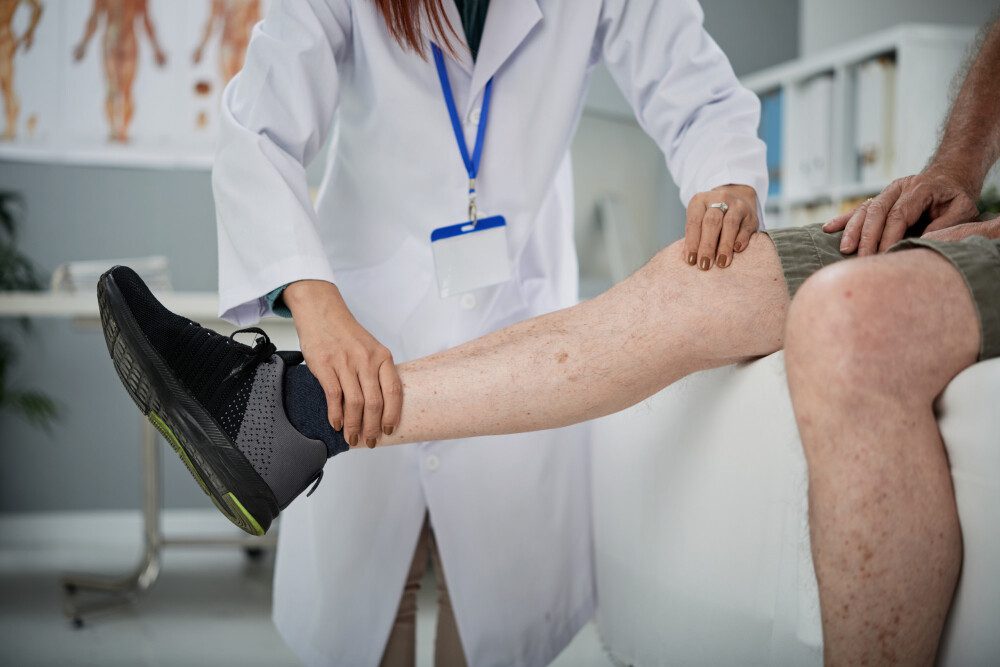It is associated with hardening of the artery in the leg. This condition can cause decreased blood flow in the legs. It usually causes symptoms such as pain, fatigue and skin color changes. Treatment of leg vein occlusion It may vary depending on the severity of the patient's condition and general health condition.
İçindekiler Tablosu
What is Leg Vascular Occlusion and Its Causes

It refers to the narrowing or blockage of the arteries in the legs. This condition occurs due to the accumulation of fat and cholesterol in the artery walls. This accumulation restricts or completely blocks blood flow within the vessel. This makes it difficult for oxygen and nutrients to reach the leg muscles. The most common cause is called atherosclerosis. Plaques formed by the accumulation of fat and cholesterol in the arteries cause the vessels to narrow. Over time, these plaques can restrict or completely block blood flow.
Smoking and diabetes significantly increase the risk of artery hardening. In individuals with diabetes, it causes the vessels to be damaged more easily. High blood pressure causes these injuries by constantly exposing the artery walls to high pressure. This leads to the formation of atherosclerosis.
Cholesterol imbalance, especially high and low levels, can increase the risk of artery plaques forming. Additionally, people with a body mass index over 30 have a higher risk of leg vein occlusion. In addition to not exercising regularly, the risk increases even more for those with a family history of this disease and individuals over the age of 50. Treatment of leg vein occlusion, this can be effectively addressed by managing risk factors and early diagnosis.
How to Treat Leg Vein Occlusion?
It occurs as a result of peripheral artery disease. Treatment usually requires a phased approach. The treatment process may vary depending on the severity of symptoms and patient characteristics.
The first step is the diagnosis of the disease. During the physical examination, the doctor checks the patient's pulse and looks for any obvious symptoms. Ankle-brachial index test is used to measure blood pressure in the legs. Ultrasound is used to image blood flow within the arteries. For a more detailed image, angiography can be used. This method uses contrast material to take an X-ray image of the veins.
Treatment of leg vein occlusion As part of this, patients should quit smoking. A healthy diet, especially a low-fat and low-cholesterol diet, can help with vascular health. Additionally, following a doctor-recommended exercise program can improve blood circulation. In some cases, narrowed or blocked arteries may require intervention. Angioplasty is a procedure in which a balloon catheter is inserted and inflated. In this way, the artery is widened. Stent placement ensures that the vessel remains open after angioplasty.
In more serious cases, surgical intervention may be required. Bypass surgery is the process of creating a new blood path around the blocked vein. Endarterectomy is the surgical removal of plaques. After treatment, check-ups should be made and lifestyle changes should be followed. If any symptom change is noticed, a doctor should be consulted immediately.
Recovery Process After Leg Vascular Occlusion Treatment
Treatment of leg vein occlusion The recovery process may vary depending on many factors. After surgery, the patient can usually stand up within a few hours. However, some procedures may require a hospital stay of several days. It is normal to have pain, bruising and swelling in the operation area. The doctor can often recommend painkillers and anti-inflammatory medications.

Heavy lifting should be avoided for the first few weeks. The doctor makes recommendations for when the patient can return to normal activities. It is important to keep the surgical area clean and dry. The stitches should not come into contact with water until the date the stitches are removed. You can start with light exercises, but you should act in accordance with the doctor's recommendations. Doctor's check-ups are important to evaluate the success of the treatment and diagnose complications.
Adapting to lifestyle changes such as quitting smoking, healthy eating and exercise accelerates the healing process. Taking the medications recommended by the doctor regularly reduces the risk of possible complications. Patients need to adhere to recommended lifestyle changes to prevent leg vein occlusion. Regular exercise supports vascular health by increasing blood circulation. Annual checkups can reduce the risk of disease recurrence.
Treatment of leg vein occlusion A full recovery process then depends on the individual's treatment and recommended lifestyle changes. You should follow the doctor's recommendations and have regular check-ups to detect complications early.


